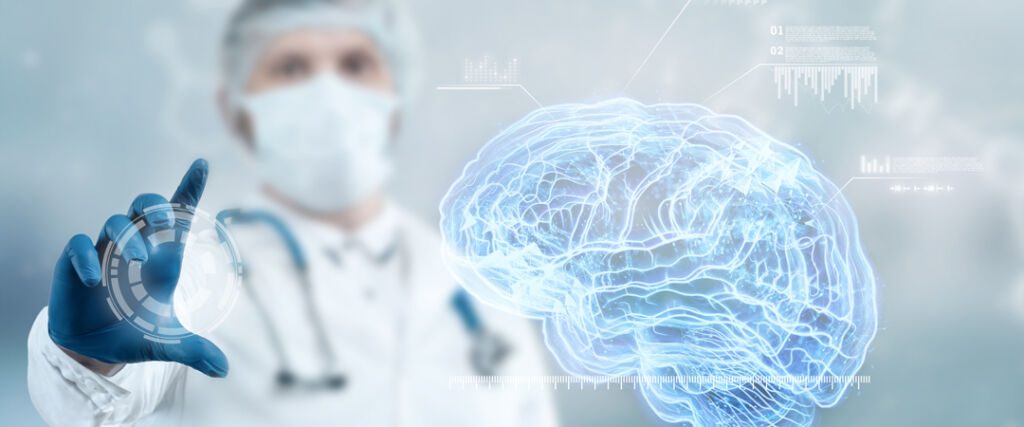
Parkinson’s disease is a disorder of the central nervous system caused by the destruction of nerve cells. It mainly affects movement control and is most commonly manifested by hand tremors. Although there is no cure for the disease, there are treatments that can help relieve symptoms and support patients. Find out more in this article.
WHAT IS PARKINSON’S DISEASE?
Parkinson’s disease is one of the most common neurodegenerative diseases after Alzheimer’s disease. It is characterised by the progressive degeneration of a specific population of nerve cells, particularly the dopamine neurons in the brain.
This neurological disease affects the dopaminergic neurons in the area of the central nervous system known as the substantia nigra. These nerve cells gradually degenerate, leaving patients disabled over time.
There are millions of cases of Parkinson’s disease worldwide. It is the cause of many disabilities in older people, especially men. However, it is women who have the best chance of survival. The situation is getting worse as the population ages.
Even if the disease is incurable for the time being, it is important to consult a specialist neurologist. He or she will analyse the patient’s condition and prescribe treatments to alleviate the motor symptoms.
The three stages of Parkinson’s disease are as follows:
Stage 1: Early signs of PD include subtle changes in walking, balance, speech and facial expressions.
Stage 2: In stage 2, the symptoms of PD become more pronounced. You may have difficulty walking or start to have problems with your hands. You may also have trouble sleeping because you can’t relax your muscles at night.
Stage 3: In stage 3, you’ll have severe problems walking and getting around. Your speech may slow down and become slurred or blurred and difficult to understand.

Parkinson’s disease progressively destroys dopaminergic nerve cells. Once 50-70% of these nerve cells have been affected, motor symptoms begin to appear. This is the time to see a specialist for diagnosis.
The main signs of the disease can be subtle, but the earlier they are treated, the less damage is done. They include tremor, fatigue, slowness of movement (akinesia), difficulty concentrating and muscle stiffness (muscular hypertonia).
Other problems can also occur, such as digestive problems, depression, sleep disorders, memory loss… In any case, the pathology develops very slowly and varies from patient to patient. Until now, the causes have not been identified.
Parkinson’s syndromes are often divided into three groups:
- Dopa-responsive dystonia: The most common of the PD syndromes, dystonia is characterised by involuntary muscle contractions that cause twisting and repetitive movements. Symptoms usually appear in childhood or adolescence and get worse over time.
- Progressive supranuclear palsy (PSP): Progressive supranuclear palsy is a rare degenerative neurological disorder that causes problems with balance, coordination and dementia. It usually progresses rapidly, leading to death within five to ten years of diagnosis. There is no cure for PSP, but medications can help control symptoms and slow disease progression.
- Multisystem atrophy (MSA): MSA is characterised by problems with movement, cognition, vision and autonomic nervous system functions such as bladder control, sexual arousal and sweating. Like PD, MSA affects both sides of the body in the same way, but symptoms tend to be more severe on both sides of the body.
As soon as motor or non-motor symptoms appear, it’s best to see a neurologist. In the final stages of the disease, patients may become bedridden.
Antiparkinsonian treatments are mainly aimed at increasing dopamine production. They do not stop the disease from progressing. The aim is to improve quality of life, depending on the patient’s specific problems.
Medication can also stop the breakdown of dopamine or control the symptoms of the disease. These types of medication can sometimes cause side effects such as nausea, vomiting and other problems.
In more complicated cases, it is possible to have surgical treatment in a specialist clinic. This involves the surgical implantation of a deep brain stimulator (DBS) with fine electrodes. In addition to these treatments, physical and speech rehabilitation can further improve patients’ quality of life.
Parkinson’s disease is caused by a loss of cells in the substantia nigra of the brain. These cells produce dopamine, a neurotransmitter that helps control muscle movement. As these cells die, dopamine production decreases and fewer nerve cells are able to send messages from one part of the body to another. The result is tremors, stiffness and other symptoms.
The exact cause of Parkinson’s disease is still unknown, but most experts believe that it has both genetic and environmental components. Several genes have been identified as playing a role in the development of Parkinson’s disease, including alpha-synuclein, parkin, DJ-1 and LRRK2 (also known as dardarin).
Genetics:
Genetic factors appear to play an important role in the development of PD, although no single gene is responsible for all cases of the disease. At least six different genes have been associated with PD, including the alpha-synuclein gene, the human immunodeficiency gene, and the immunoglobulin gene.

